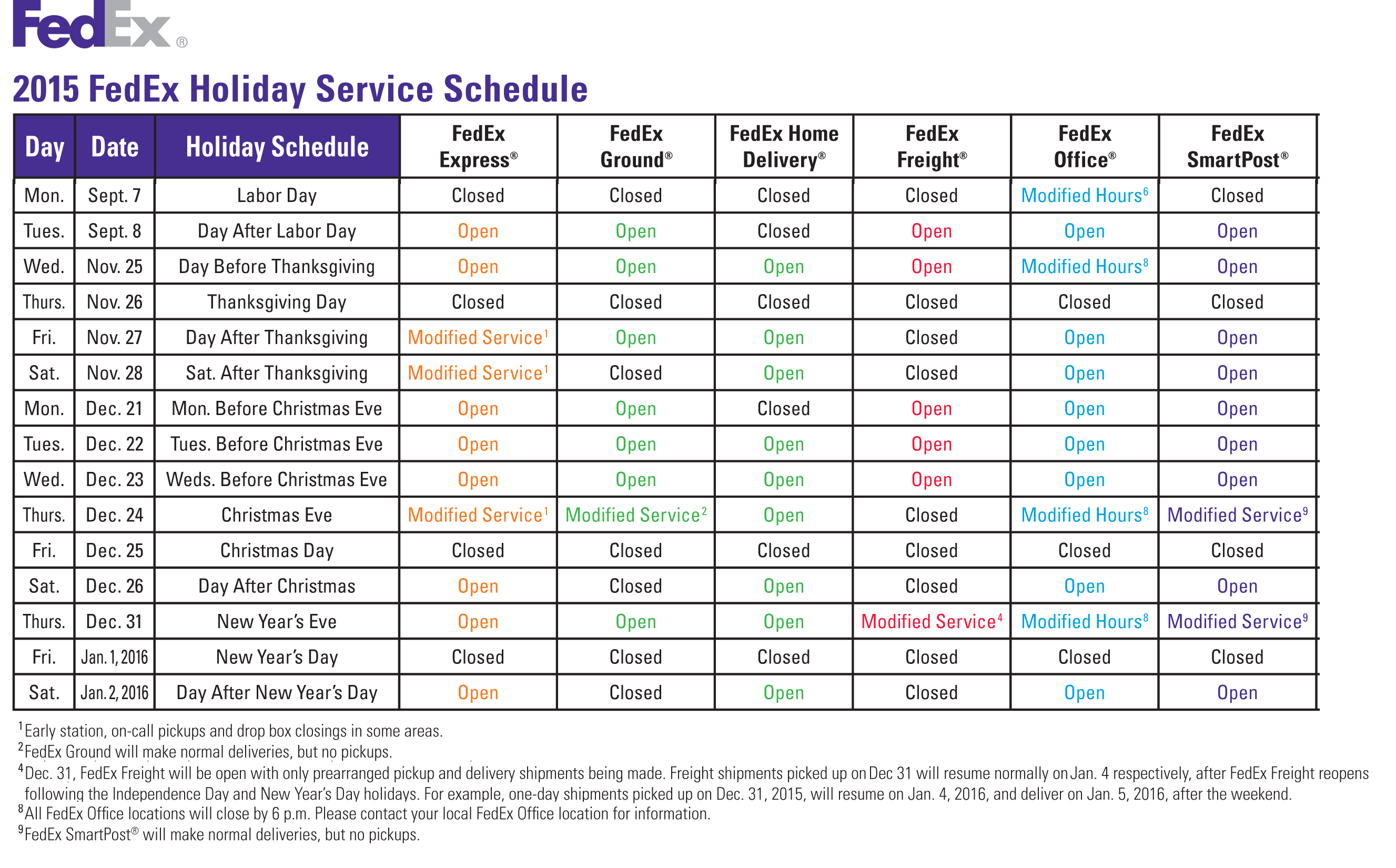

Its range varies from several hundred yards to several miles, depending on the density of obstructions such as buildings. And GPRS is a digital cellular technology that can transmit both voice and data, with a maximum throughput of about 100Kbps. Client devices automatically connect when they come in range, making it suitable as a replacement for wires between devices, such as connecting headsets to cell phones or handhelds to printers.
#Fedex by end of day Bluetooth
Bluetooth is an industry standard for wireless networks, with a range of about 10 feet and a maximum throughput of about 1Mbps.
#Fedex by end of day Pc
One of three related Institute of Electrical and Electronics Engineers standards for wireless networks with ranges of about 300 feet, 802.11b provides throughput of up to 11Mbps and requires that client devices connect to an access point, much like an Ethernet PC connects to a hub or router. That’s why both companies’ efforts revolve around the same technologies (802.11b, Bluetooth and GPRS), which they use to address similar challenges. Their massive scale also favors the use of global standards, which provide more vendor choices and lower technology costs. (Each is spending more than $120 million?spread over three to five years?on current wireless efforts, which is a relatively small portion of each company’s roughly $1 billion annual IT budgets.)īoth UPS and FedEx rely on near-real-time data to manage their operations, and the only way for the companies to get this near-real-time information is through the use of wireless technology in the field and in their facilities. Wireless technology lets these companies shave off precious seconds throughout the delivery process.

The technology is not a secret, it’s what you do with it,” says UPS Senior Vice President and CIO Ken Lacy.Įvery second really does count when you handle 13.6 million packages a day, as UPS does, or even 5 million, as FedEx does. “You only have a six-month advantage in this industry. But as with their overall approaches to technology, the companies’ wireless strategies differ. Now that commercial products are out there, we have alternatives,” says FedEx Executive Vice President and CIO Rob Carter. But we had to provide our own bandwidth and we had to develop technology to manage it. “Wireless data connectivity is something we’ve done for many years. But in recent years, both have switched to standards-based technologies such as 802.11b wireless LANs, Bluetooth short-range wireless links and general packet radio service (GPRS) cellular networks that provide lower development and maintenance costs, greater throughput and security, and lower acquisition and deployment costs.

UPS and FedEx have used various forms of wireless technology since the late 1980s, usually proprietary processes developed with vendors. Both are also looking ahead to potential applications of radio frequency identification and GPS wireless technologies (see “New Technologies Hit Mainstream,” ).īeware the 9 warning signs of bad IT architecture and see why these 10 old-school IT principles still rule. The two companies are exploiting new wireless technologies in their differing attempts at aiding the two main components of their operations: pickup/delivery and packaging/sorting. “They have two different ways of ending up at essentially the same point.” Recently, these two pioneers in wireless applications utilization have increased their use of off-the-shelf solutions. “FedEx is in a startup way, while UPS is fairly staid,” says Kevin Tynan, a senior equity analyst at Argus Research. But the goal is the same for both companies: to utilize next-generation wireless technologies in order to better manage the delivery of millions of packages that flow through dozens of sorting facilities every day. FedEx deploys new technologies as soon as it can justify the cost and demonstrate improved efficiencies and customer benefit. UPS refreshes its technology base roughly every five to seven years, when it rolls out a unified system in stages that it synchronizes with the life span of the older system. Their approaches to deploying wireless technologies over the past 15 years have been markedly different?FedEx has led the way with cutting-edge applications, while UPS has been slower and more deliberate.


 0 kommentar(er)
0 kommentar(er)
